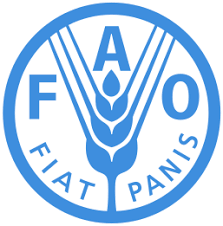The World Bank is a vital source of financial and technical assistance to developing countries around the world. We are not a bank in the ordinary sense but a unique partnership to reduce poverty and support development. The World Bank Group has two ambitious goals: End extreme poverty within a generation and boost shared prosperity.
- To end extreme poverty, the Bank's goal is to decrease the percentage of people living on less than $1.25 a day to no more than 3% by 2030.
- To promote shared prosperity, the goal is to promote income growth of the bottom 40% of the population in each country.
The World Bank Group comprises five institutions managed by their member countries.
The World Bank Group and Land: Working to protect the rights of existing land users and to help secure benefits for smallholder farmers
The World Bank (IBRD and IDA) interacts primarily with governments to increase agricultural productivity, strengthen land tenure policies and improve land governance. More than 90% of the World Bank’s agriculture portfolio focuses on the productivity and access to markets by small holder farmers. Ten percent of our projects focus on the governance of land tenure.
Similarly, investments by the International Finance Corporation (IFC), the World Bank Group’s private sector arm, including those in larger scale enterprises, overwhelmingly support smallholder farmers through improved access to finance, inputs and markets, and as direct suppliers. IFC invests in environmentally and socially sustainable private enterprises in all parts of the value chain (inputs such as irrigation and fertilizers, primary production, processing, transport and storage, traders, and risk management facilities including weather/crop insurance, warehouse financing, etc
For more information, visit the World Bank Group and land and food security (https://www.worldbank.org/en/topic/agriculture/brief/land-and-food-security1
Resources
Displaying 2071 - 2075 of 4907The Way Forward for Indian Ocean Island Tourism Economies : Is There a Role for Regional Integration?
In addition to some of the most
acclaimed beaches in the world, the Indian ocean islands
offer one of the planet's greatest concentrations of
biodiversity and stunning landscapes that include active
volcanoes, sculpted canyons, and verdant seaside cliffs.
Yet, despite its many attributes and accolades, the region
is not very well known within the global tourism
marketplace. This note is an analysis aimed at assessing
Greenhouse Gases from Reservoirs Caused by Biochemical Processes : Interim Technical Note
A decade ago, the contribution of
greenhouse gases (GHGs) from reservoirs was estimated to be
up to 7 percent of global GHG emissions from all sources.
Much research on GHG emissions from reservoirs has
subsequently been conducted and recent studies have
indicated corresponding global estimate to be less than 1
percent. However, these studies still have a limited
coverage of ecosystems and geographic areas, and, more
Estimating the Association Between Women's Earnings and Partner Violence : Evidence from the 2008-2009 Tanzania National Panel Survey
The aim of this study is to explore the
relationship between women's labor market outcomes and
partner violence among Tanzanian women, and to estimate the
difference in women's weekly earnings between women who
have been abused and women who have not. In addition, this
study estimates the lost earnings to women because of
partner violence as a share of Tanzania's gross
domestic product. Partner violence is the most common form
Nepal : Small Area Estimation of Poverty, 2011
Small area estimates of poverty have
become useful tool in targeting poverty reduction by
geographic areas. For Nepal, this is the second poverty map
produced after a gap of seven years in collaboration with
the Central Bureau of statistics, Nepal. This report
presents 2010/11 small-area estimates and maps for Nepal at
the 75 district, 967 ilaka and 2344 'target area'
level, of poverty incidence, poverty gap, and poverty
VGGT: Contribution of the Land Governance Assessment Framework (LGAF) to integrating Voluntary Guidelines principles in country level action plans
The “Voluntary Guidelines on Responsible Governance of Tenure of Land, Fisheries, and Forests in the Context of National Food Security” (VGGT), endorsed by the Committee on World Food Security (CFS) in 2012, set out principles and internationally accepted standards for responsible practices and is the first comprehensive intergovernmental global instrument on tenure and its administration.







